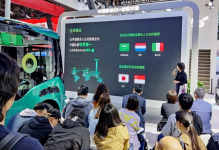
China’s first 5G unmanned bus operation report is released, and China’s unmanned bus routes lead the world in total length
On April 20, the first domestic unmanned bus-related operation analysis report – “China’s First 5G Unmanned Bus Line Operation Report” was released. According to statistics, the first 5G unmanned bus line in China jointly deployed by China Mobile and Qingzhou Zhihang, Suzhou Q1 Road, has been in normal operation for more than 5 months, accompanied by more than 11,000 low-carbon trips. The report also pointed out that the total length of unmanned bus routes in operation on public roads in China is currently 54.6 kilometers, ranking first in the world and 8.6 times that of the second-ranked United States.
“China’s First 5G Unmanned Bus Line Operation Report” was jointly launched by CB Insights China team, China Mobile and Qingzhou Zhihang. CB Insights is a world-renowned market data research platform and an authoritative think tank. China Mobile is the largest mobile communication operator in China. Qingzhou Zhihang is a leading enterprise in the field of unmanned driving. It has deployed unmanned bus lines in many places.
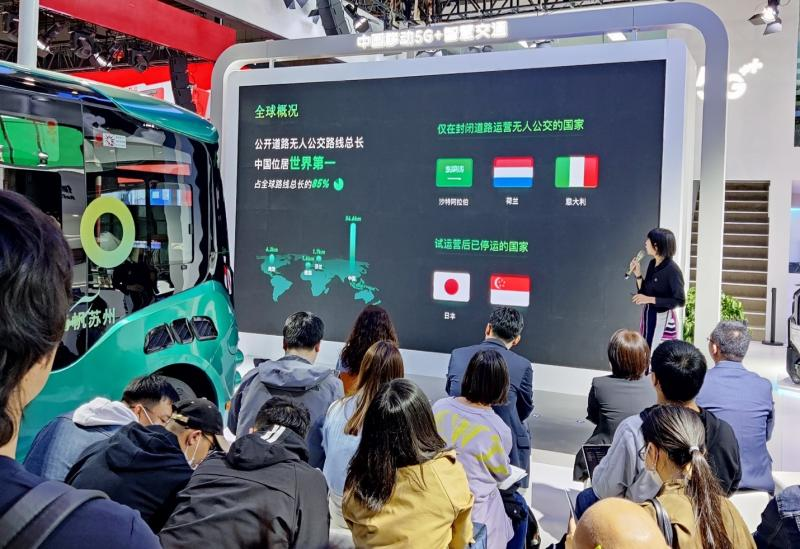
The report comprehensively analyzes the operation of Suzhou unmanned bus Q1 Road, the definition of micro-circulation bus in China, the user portrait of Qingzhou Zhihang unmanned bus early bird program, and the operation of unmanned bus around the world. Yu Qian, the co-founder and CEO of Qingzhou Zhihang, said that unmanned public transport is a new thing. Providing initial operation data and analyzing the operation status can provide reference for the further expansion of the operation scope of unmanned public transport in the country, and make it easier Unmanned driving enters people’s lives.
China’s driverless landing “bus first”
The report compares the passenger-carrying situation of unmanned buses and unmanned taxis from the perspective of the number of order services provided by each vehicle per day. The unmanned bus Q1 Road, which is normally operated in Suzhou, provides an average of 58 order services per vehicle per day, while in Autonomous taxis operating in China serve an average of nearly 10 orders per vehicle per day, compared with 4.85 in the United States.
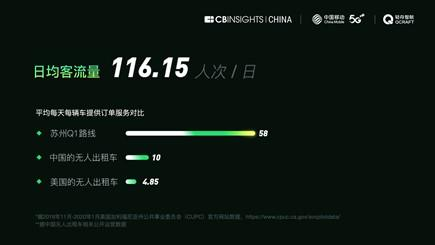
Unmanned rentals generally use cars with small passenger capacity. Under the pressure of existing high costs, the area that can be supported is limited, and it is impossible for passengers to directly pay for the vehicle and operating costs. In contrast, most of the unmanned buses are mainly micro-circulation buses. Take the Dragon Boat ONE launched by Qingzhou Zhihang as an example. It adopts a model of less than six meters and can flexibly set the driving route. It is suitable for narrow streets and has greater social benefit.
With the maturity of autonomous driving technology, Chinese city managers have gradually realized that unmanned buses that meet the needs of public travel are truly suitable for China. Just like the developed high-speed rail, subway and bus networks in China, the efficiency and safety of public travel are all serving the refined management of the city. Therefore, in terms of landing mode, the United States emphasizes the landing of unmanned rentals, while China emphasizes the landing in the field of public travel, and focuses more on the proposition of “micro-circulation”.
On December 30, 2020, the Ministry of Transport publicly released the “Guiding Opinions on Promoting the Development and Application of Autonomous Driving Technology in Road Traffic”, encouraging autonomous driving to carry out commercial operations and exploration, and “bus first” in passenger travel.
Xie Zhendong, director of big data of Guangzhou Public Transport Group Co., Ltd., summed up the current situation and trend of public transport: the decline of bus passenger flow and the increase of public transport input costs are a major pain point in the current industry; the aging of bus drivers and the frequent occurrence of bus accidents are the industry a major problem. The intelligent operation of bus network connection and the calculable and predictable travel time are the only way for “transit priority” to “transport excellence”; intelligent network bus is the solution to the pain points and difficulties of the bus industry and the digital transformation of the industry. In his view, the “dimension reduction” application of intelligent network-connected buses in scenarios such as micro-circulation self-driving buses and BRT vehicle-road coordinated buses is a wise move to promote intelligent network-connected buses at present.
Microcirculation bus aims at the city’s “last three kilometers” problem
In the city, the process of the traffic flow from the end of the urban main road, through the microcirculation road system of the branch, and then from the microcirculation road system to other main roads, is the microcirculation of urban road traffic. According to the “China Major Cities Traffic Analysis Report” in the third quarter of 2018, the utilization rate of most expressways and main roads in Beijing is as high as 100%, and the average congestion rate exceeds 60%, while the average congestion rate of secondary roads or branch roads is as high as 100%. It is only about 30%, which can play a good diversion effect.
Urban road traffic microcirculation has two major functions. The first is to make full use of the existing road resources, to solve the traffic needs generated within the region, and to promote the diversification of travel modes and travel path choices; the second is to solve the traffic needs within the region. On the basis of the reasonable traffic microcirculation organization, the main road traffic flow is guided to transfer to the microcirculation road network, so as to relieve the traffic pressure on the main roads around the area.
Urban public transport microcirculation is the application of traffic microcirculation in public transport, which can evacuate traffic flow in time and ensure the speed and efficiency of public transport system. At present, the domestic microcirculation bus application is ushering in an outbreak period. On March 1, 2021, Shenzhen Bus Group opened 8 shuttle bus lines, each of which is connected by subway stations, serving large communities and high-tech industries. In areas with large demand for short-distance travel, such as parks, set up greeting stations, and adopt the method of stopping when you wave, and pressing the bell. Such lines are high-frequency and fast, with short lines and fast turnover, which greatly meets the needs of passengers for convenient travel. In addition, the dedicated subway connection line has also begun to be used in Shenzhen. After the opening of subway lines 6 and 10, Shenzhen has opened 11 new bus connection lines.
Recently, Dongguan, Guangzhou, Fuzhou, Suzhou and other cities are also vigorously developing microcirculation bus and subway connection lines.
In this outbreak period, the Dragon Boat ONE unmanned minibus with the characteristics of intelligence and networking can play an important role. On the one hand, it supports the fixed driving routes in the area, and sets up stations along the way according to the needs to meet the rigid needs of daily short-distance travel; Conference centers, industrial parks, high-tech parks and other places.
According to Jiang Xin, deputy general manager of Smart Transportation Product Division I, China Mobile Shanghai Industrial Research Institute, with the integration of technologies such as 5G, Beidou, artificial intelligence, and big data, urban transportation has gradually achieved refined operation and management. Micro-circulation public transport is a new mode of transportation and a new format of transportation that is in line with refined operations on the basis of traditional operations in the urban transportation field. In response to the diversified travel needs of citizens, focusing on the accessibility of the bus line network can provide services with a higher degree of freedom, while effectively balancing traffic efficiency and operating costs, and is expected to become the main direction of bus disruption in the future.
Seven cities across the country have deployed public road unmanned buses
The report found that seven cities in China, Suzhou, Chongqing, Shenzhen, Zhengzhou, Guangzhou, Haikou, and Tianjin, have deployed unmanned bus routes operating on public roads. Among them, Suzhou’s public road unmanned bus routes ranked first with a total length of 15.3 kilometers, 53% more than the second-ranked Chongqing.
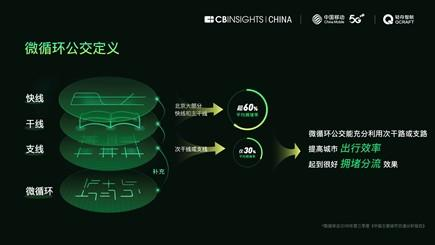
Dai Yifan, Assistant Dean of the Suzhou Automobile Research Institute of Tsinghua University, said that Suzhou, as a national 5G Internet of Vehicles demonstration city, has been exploring the best application scenarios for the combination of 5G and autonomous driving. In addition to Suzhou unmanned bus Q1, Suzhou has opened unmanned buses Q2 and Q4. At least four 5G unmanned bus lines will be deployed this year, covering a 9.8 square kilometer area around the high-speed rail new city.
Judging from the early bird program user portraits obtained by Qingzhou Zhihang, Suzhou citizens account for the largest number of users who experience a single experience and are most willing to try unmanned public transport; Shenzhen citizens account for the largest proportion of daily commuter users, and the average mileage is the farthest and the most Easy to accept unmanned bus.
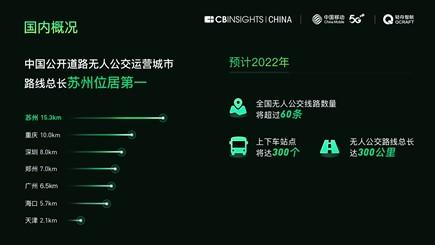
Shao Yuan, Dean of the Research Institute of Shenzhen Transportation Center, believes that the Regulations on the Administration of Intelligent Connected Vehicles in Shenzhen Special Economic Zone, which is being drafted by Shenzhen, can provide a legal basis for the operation of intelligent connected vehicles on the road and provide legal space for the commercial operation of mature technology application scenarios. , clarify the safety risk supervision mechanism, promote the healthy and orderly development of the intelligent networked automobile industry, and promote the transformation of capital in this field from one-way input to a virtuous circle of input and output.
The report also predicts the development speed of domestic unmanned buses in the future. It is estimated that by 2022, the number of unmanned bus lines in the country will exceed 60, the number of pick-up and drop-off stations will reach 300, and the total length of unmanned bus routes will be 300 kilometers.
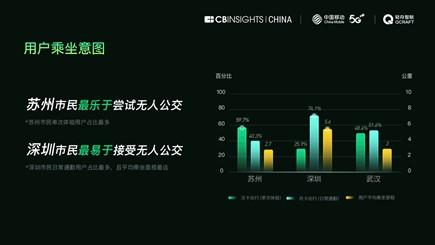
5G vehicle-road collaboration makes unmanned buses more convenient and safer
According to the report statistics, more than 130 intelligent network-connected sensing devices are deployed on the Q1 route of Suzhou unmanned bus, covering 12 intersections. The transmission rate of the 5G network in the operating line area reaches 500Mbps, and the delay is within 15 milliseconds.
Through China Mobile’s 5G network, the unmanned bus can obtain the phase and time information of the traffic lights at each intersection of the continuous straight section. When the unmanned bus approaches the first intersection of the green wave passing section, the unmanned bus system of Qingzhou Zhihang will combine its own path. And traffic light information, get the best speed, avoid stopping due to temporary light changes, and reduce the waiting time when passing the intersection.
Since unmanned buses belong to public travel and enjoy high road rights, special traffic lights for buses can also be set up in the future. The roadside device can sense the vehicle speed, position, and driving status of the special bus in real time. When the device senses that the unmanned bus is about to arrive, if the green light is in the state at this time, the green light duration will be extended for a certain period of time, and if the red light is at this time. If the traffic light is in the same state, the duration of the red light will be shortened by a certain period of time, so that when the unmanned bus arrives at the intersection, the traffic light can basically remain in the green state. Combined with the intelligent automatic adjustment of the optimal speed of unmanned buses, it can greatly improve the convenience of public travel.
Based on China Mobile’s vehicle-road collaboration 5G cloud platform, the Longzhou ONE unmanned bus deployed by Qingzhou Zhihang can obtain real-time construction sections, signs and signage information on the road, and can also realize 5G over-the-horizon perception to obtain road traffic participants in the distance. Make road decisions and planning in advance, control vehicles to abide by the rules of signs and signs, avoid accidents and violations, and ensure safety.
The report pointed out that Suzhou 5G unmanned public transport, through the coordination of various 5G vehicles and roads, saves about 8% of passengers’ travel time and reduces about 10% of passengers’ negative ride experience, such as sudden braking and emergency avoidance.
Ben Wei, deputy general manager of Nanjing Les Internet Information Technology Research Institute Co., Ltd., pointed out in the report that the deep integration of 5G, vehicle-road coordination and autonomous driving technology has become an industry consensus in China’s intelligent networked vehicle field. Vigorously developing unmanned micro-circulation buses will not only help solve the “last three kilometers” of smart travel, but also the “first three kilometers” of C-V2X autonomous driving from ideal to reality. Through networked perception, intelligent management and normalized operation, multi-party participation will jointly create an urban smart bus travel scene with “sense of technology”, “sense of participation” and “sense of temperature”, which will surely promote the efficiency, safety and comfort of public travel. The level has been improved in an all-round way, helping China’s intelligent networked automobile industry to achieve stability and long-term development.
The Links: LQ085Y3DG03 LQ070T5DR06


